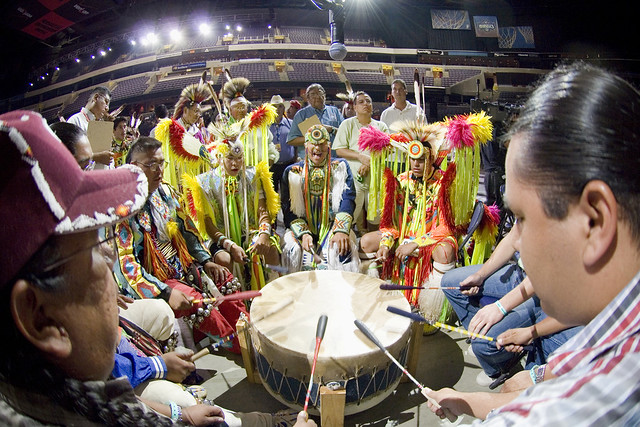 |
| North Indian hand drum (Photo credit: Wikipedia) |
The type of Indian drums varies. Each Indian tribe constructs drums to their particular desire. Drums may be created with carved images of people. Or, other Indian tribes may choose animal designs to adorn their Indian drums. Some use jewels and color in northwest Indian drums. Drums are designed by hand and are particular to each drum maker.
Indian drums are very popular today. Many people of a variety of ethnic backgrounds use Indian drums in drumming groups and as rustic home décor. It is no longer difficult to find authentic Indian drum because of the use of the internet. And, in many locations and regions of the country, Indians drummers have businesses, offering their Native hand drums and handcrafts. In the western United States, and southwest, Indian drum is common in stores as well. A large number of Indian tribes inhabit New Mexico and Arizona.
If you do not live close to Indian reservations, locating an authentic drum is not as easy, but can be accomplished easily online. Indian drums are come in many sizes and styles from small hand drums to large ceremonial drums.
When ordering an Indian drum, you can choose between shaman drums which are one-sided hand drums like the Plains Indians use or Tarahumara Indian hoop drums which are double-sided. Most drums may be played with the hand or by using a drum beater or tom-tom like. For ceremonies and drum circles pow wow drums are most desired for their deep low tones. Good powwow drums also have a base to hold the drum during use. Unlike frame drums or handdrums, ceremonial pow wow drums are always played with a beater. Some of the nicest Northwest Indian drums and most unique drums are created with cedar for a rich red and blond color.


